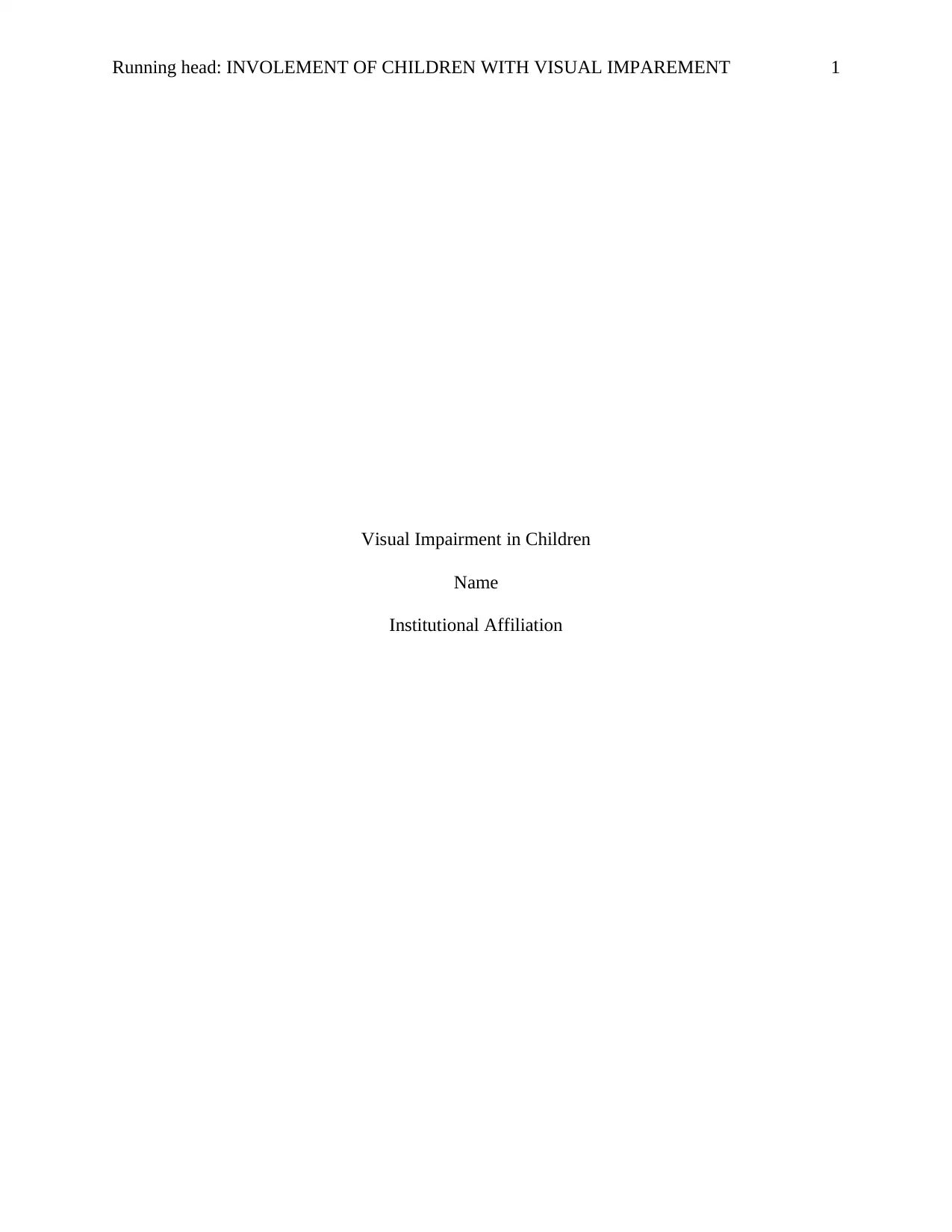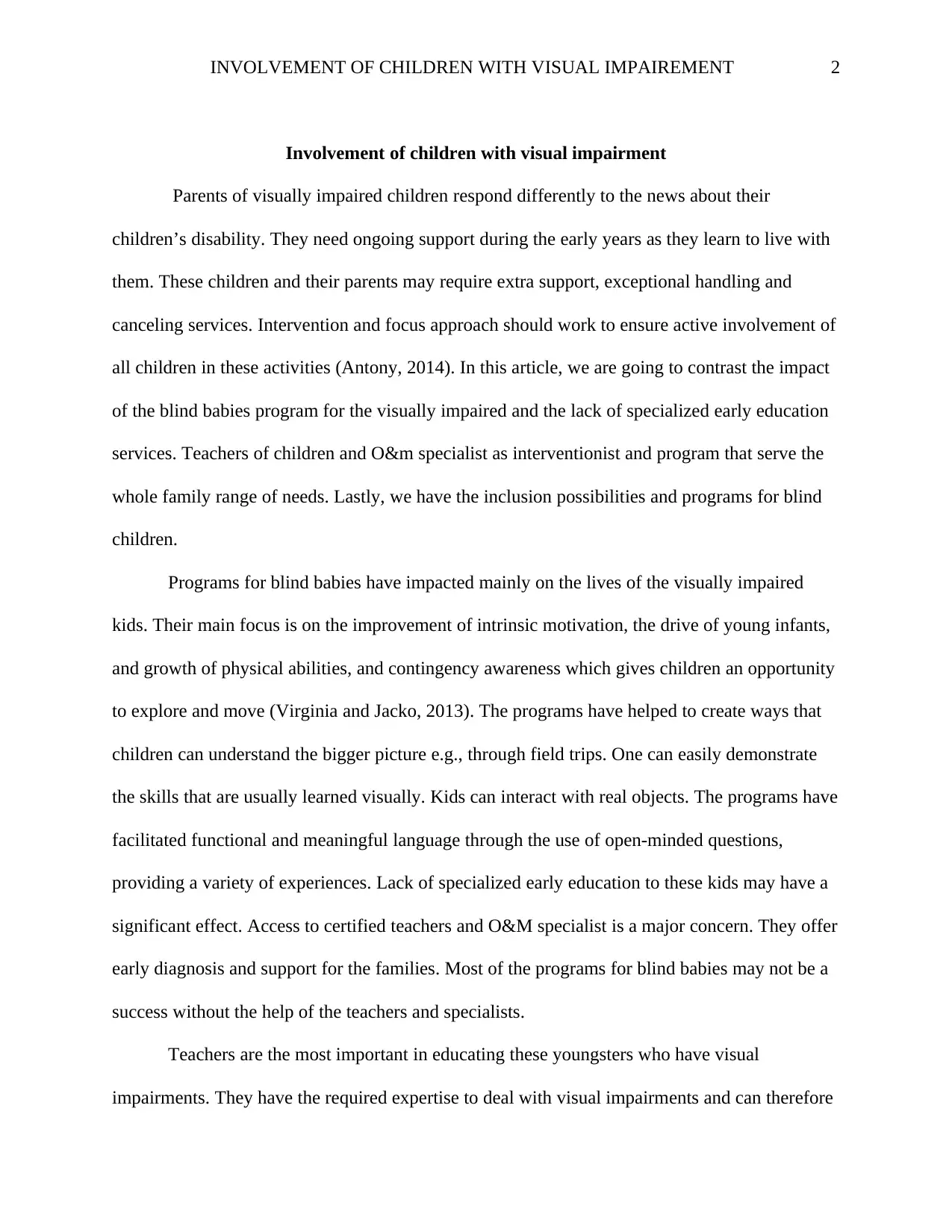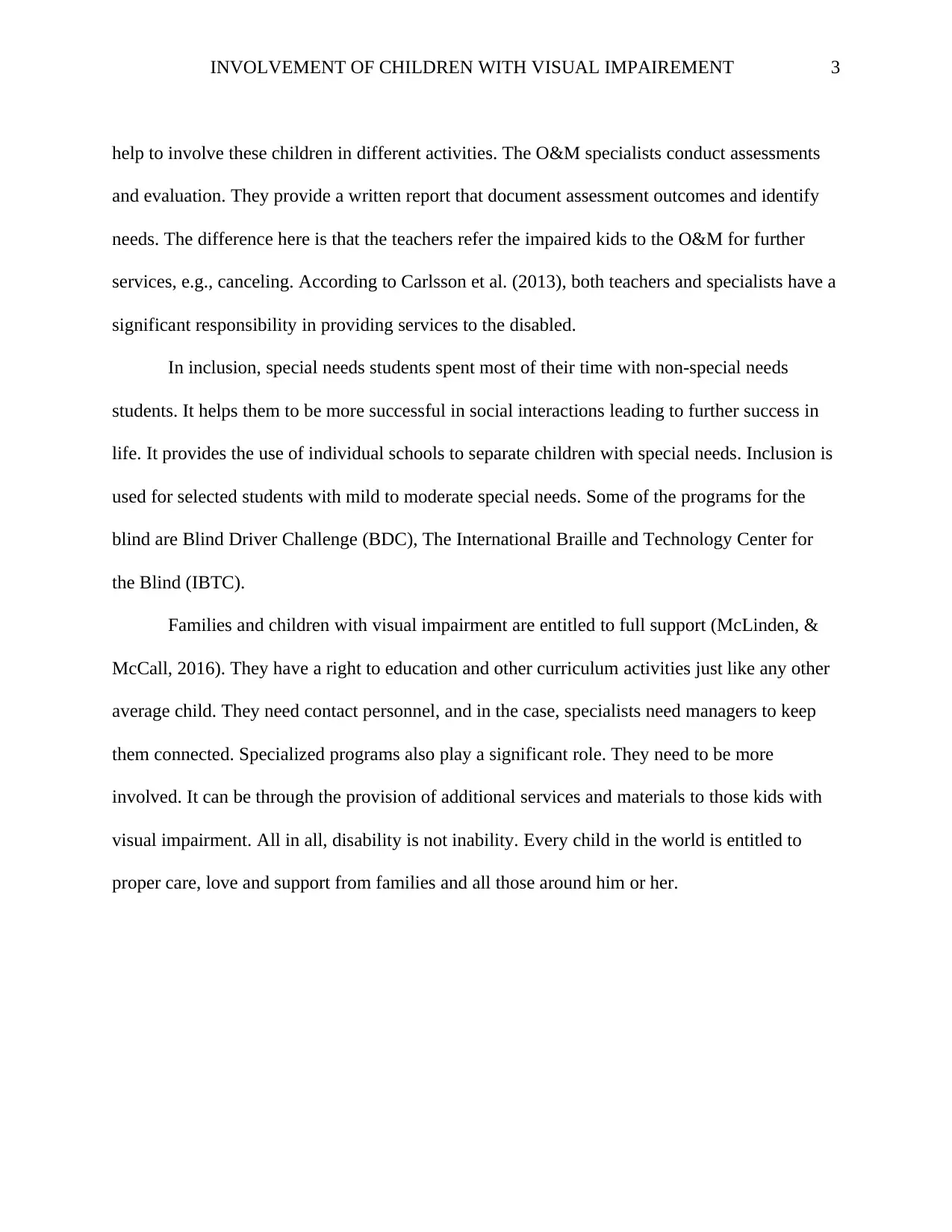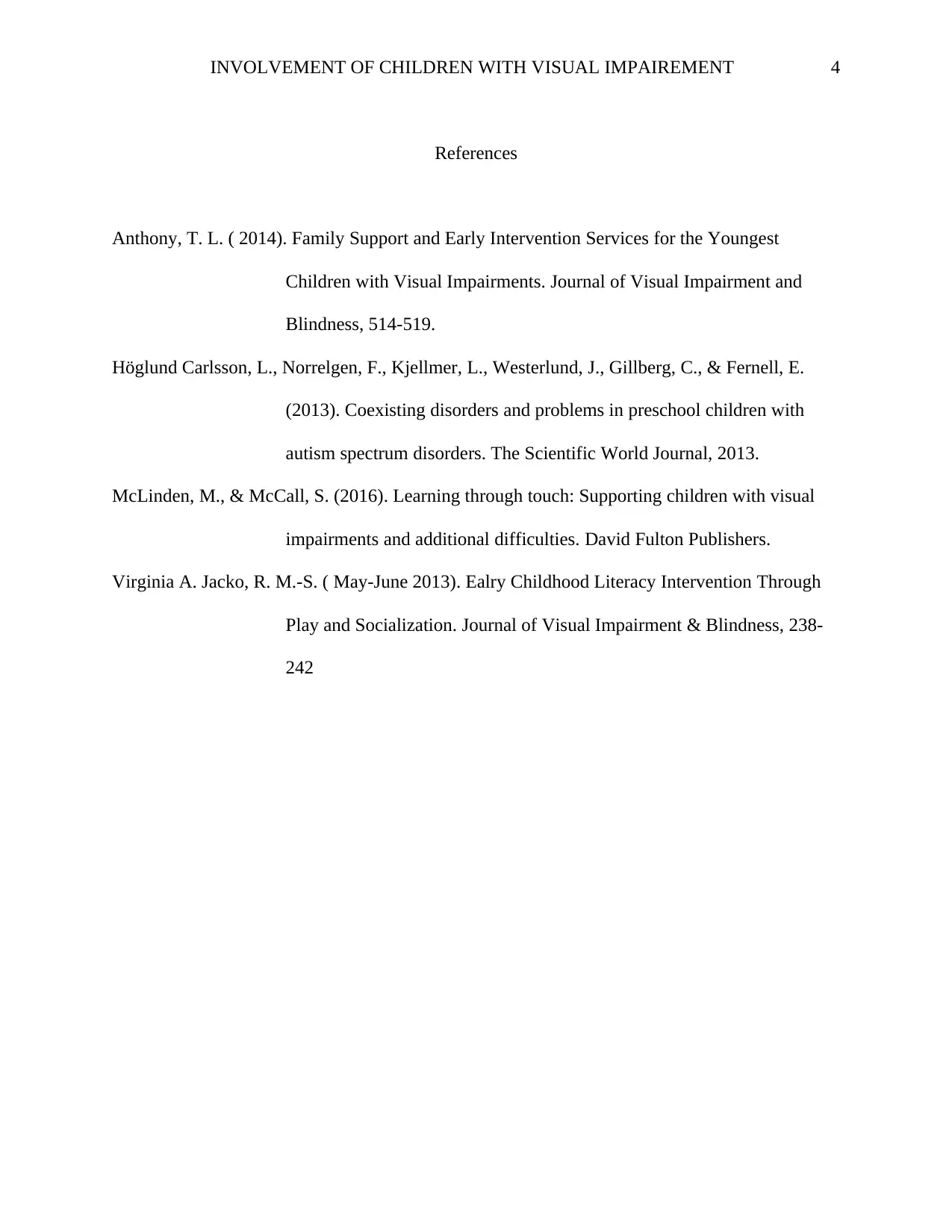Analyzing Early Intervention and Inclusion for Visually Impaired Kids
VerifiedAdded on 2023/06/03
|4
|810
|201
Essay
AI Summary
This essay contrasts the impact of the Blind Babies program for visually impaired children with the effects of lacking specialized early education services. It highlights the critical roles of teachers and Orientation & Mobility (O&M) specialists as interventionists, emphasizing programs that cater to the whole family's needs. The essay also explores inclusion possibilities and specific programs designed for blind children, noting how early intervention focuses on improving intrinsic motivation, physical abilities, and contingency awareness. It argues that while specialized programs like Blind Driver Challenge (BDC) and The International Braille and Technology Center for the Blind (IBTC) are essential, the support of teachers and O&M specialists is indispensable for successful integration and education. The essay concludes by advocating for full support and equal educational opportunities for children with visual impairments, reinforcing the idea that disability does not equate to inability.
1 out of 4











![[object Object]](/_next/static/media/star-bottom.7253800d.svg)